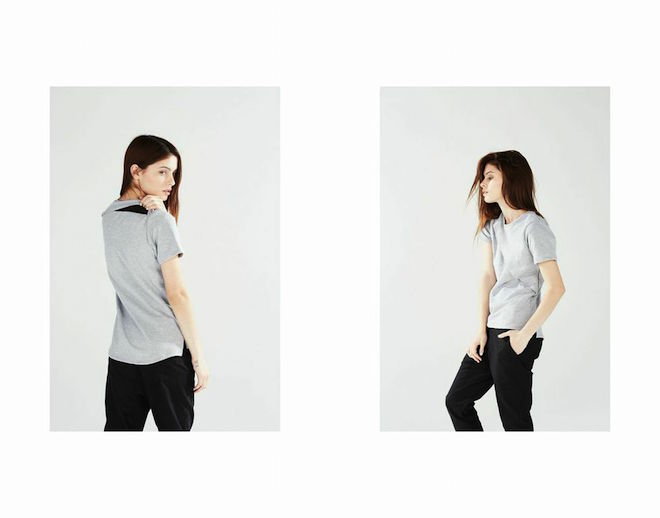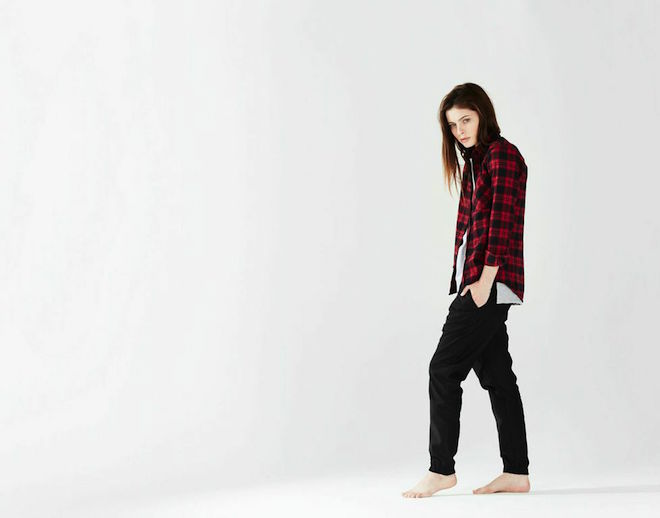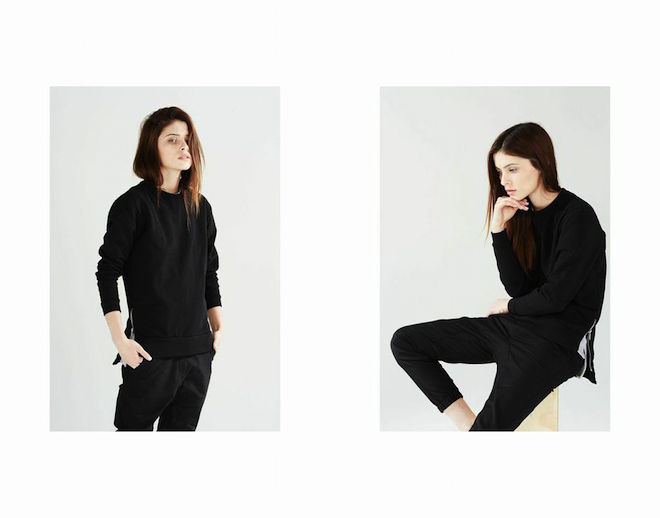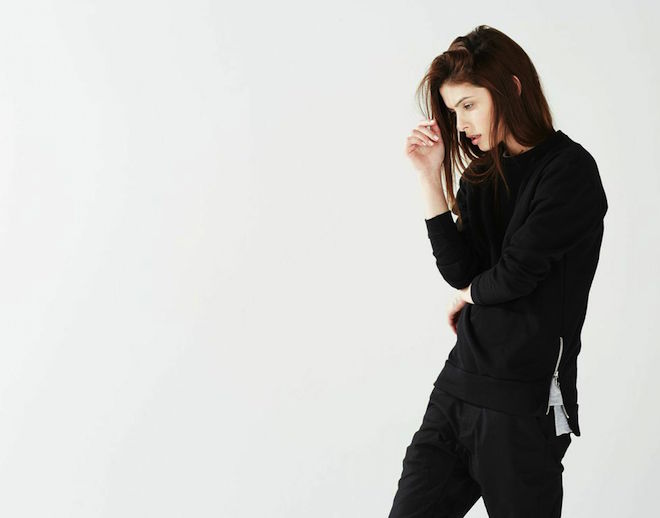Blending experimental identity with the viral energy of streetwear, VEER NYC’s design philosophy encourages the wearer to blur the lines of masculine vs feminine style, transcending traditional dress codes and encouraging expression through individuality.
As the concept of a ‘third gender’ in fashion marks a significant turning point in the way we think – VEER NYC are exploring the notion of ‘his’ and ‘hers’ by moving between a genderless aesthetic, a neutrality only determined by fit and sizing.
Founded in 2013 by Jenny McClary and Allie Leepson, we caught up with the design duo to discuss the redefinition of popular dress, and how fashion is moving forward to reflect the realities of the way we live now.
What were you both doing before launching Veer NYC?
Allie – I was (and am) a fashion photographer for multiple brands.
Jenny – I was doing creative strategy and marketing for creative production companies serving the fashion and advertising industries.
Describe your core aesthetic – how does it differ in comparison to other womenswear labels – what are you trying to inform the wearer about?
J – Our core aesthetic is minimalist with complexities in detail, modern and functional. VEER [almost always] exists around the absence of colour and also the transformability of pieces that hold their strength in the details (fabric, hardware and construction). We’ve also truly rejected feminine silhouettes in favour of a fit that ends up looking very androgynous.
A – A lot of other brands that claim to exist in the same sector end up being more masculine of centre and not quite as clean and minimal as what our goal is to be.
So how did the decision to start the label come about – in particular, focusing on an androgynous silhouette?
J – Both Allie and I had a sense of style that was hard to satisfy. We were seeking fashion that was truly genderless in design and aesthetic – but would also actually fit. We weren’t looking for the tomboy trend, nor were we looking for womenswear that was “menswear-inspired”.
A – Those trends we were seeing all still maintained pretty traditionally feminine details and shape so it wasn’t cutting it.
There is growing experimentation to find a neutral space between male and female fashion, making the line between genders more ambiguous – why do you think this is?
J – I think the definition of beauty is growing as a culture as a result of people experimenting in this space. Just as we saw the blending of gendered roles, we are going to see that in aesthetics as well. Each traditional “model” has its strengths and a lot of people right now are feeling free and confident enough to pull from both ends of the spectrum to create what’s right for them.
A – Women and men are constantly going to move towards better and more open ways of self-expression. As we learn more about what feels “right” it’s only natural that we find that within aspects of both womenswear and menswear. We’ll each find our own sweet spot!
Do you think the fashion industry could be doing more to promote the concept of a ‘third sex’ – could the future be genderless shopping?
J – That would be amazing if unisex fashion became more solidified! I think the difficult part of unisex clothing is that the buyer has to be willing to play around with sizes to achieve the fit he/she wants. Male and female bodies are different so it’s not such a transferrable “look” when buying. I think we’d first have to tackle the way we approach size.
So is the non-gendered route a progressive factor in your creative vision for the label?
A – We will continue to push the boundaries with our line and we’d love to design what we are comfortable calling unisex.
You don’t design by season, so how does your process evolve creatively and where do you draw influences from?
J – We are constantly creating! I think a lot of our process has to deal with how we piece together a lot of clothing that could fall in multiple seasons anyway. Layering is key for us.
A – And I suppose “de-layering” as well haha. We also take a lot of influence from Japanese and Korean menswear.
You’re only available online at the moment – how do you envision the label growing in the future?
As VEER, we exist on veernyc.com, but we do have a couple of brick and mortar shops that are selling our pieces now. In NYC we have American Two Shot, upcoming in Canada is Frances Grey, and online we are with Not Just Another Label. We’ll be expanding that so we can have a presence in so many more cities and states.
So let’s think for a moment about the VEER NYC muse – if you could choose one person who completely embodies your design ethos and attitude, who would it be?
J & A – Patti Smith.
And Patti was all about freedom of expression as we know. So in terms of tapping into your own creative freedom to build the label, what has been the most rewarding part of the journey so far?
J – We love seeing how different people with different styles transform our pieces.
A – We never really had one specific type of person in mind when we started the company. We wanted to build a brand that, at a glance, looked one way, but could easily be re-shaped to fit another. When we see that happen it’s incredible!
VEER NYC’s latest collection DRIFT [01] is now available online.





 PREVIOUS
PREVIOUS

 Twitter
Twitter
 Tumblr
Tumblr
 YouTube
YouTube
 Facebook
Facebook
 Instagram
Instagram
